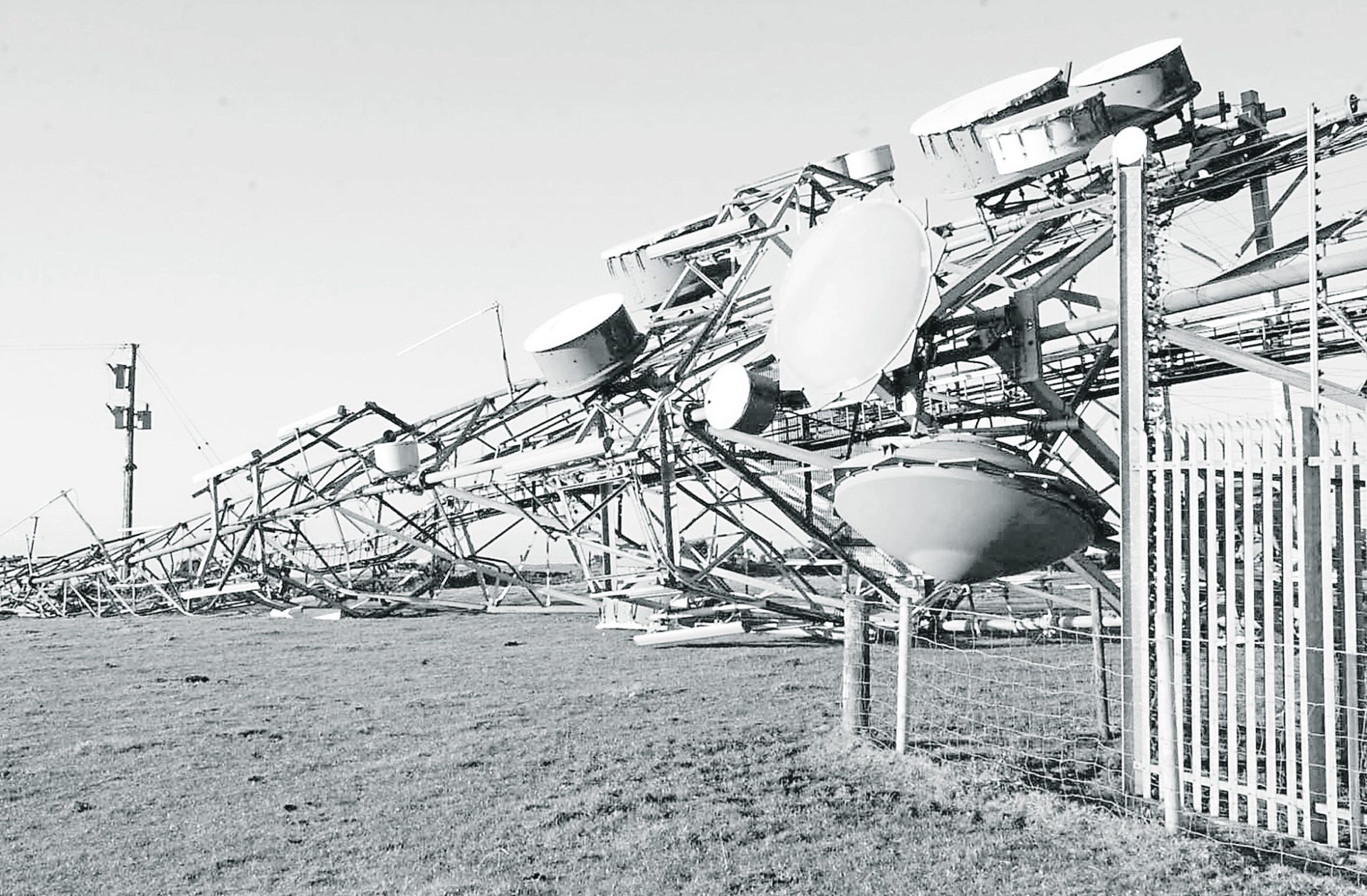WHEN firefighters were called to a blaze at a 5G mast in west Belfast recently, it marked the 18th such arson attack in Northern Ireland within 12 months.
Police believe most of the incidents – centred around west Belfast – are deliberate, and while they’ve yet to confirm a motive, the focus has turned toward conspiracy theories and online misinformation about the safety of 5G technology. The attacks are eye-opening in their scale. But in some parts of Tyrone, they will also feel strangely familiar.
Just over 20 years ago, long before smartphones became part of everyday life, a spate of sabotage attacks on mobile phone masts took place across the county, particularly in the Ballygawley area.
The concerns back then were not driven by social media, but by a very real community fear – particularly around the idea that radiation from masts could be linked to cancer.
The parallels between those incidents and the current 5G attacks are quite striking.
In December 2002, vandals toppled a 150ft communications mast near Ballygawley.
But instead of condemnation, the act was quietly welcomed by some residents.
Locals claimed six people in the immediate area had been diagnosed with cancer within three years, three of them had died. One councillor described it as an ‘epidemic’, and calls were made to halt any attempts to rebuild the mast.
NIE, who owned the structure, insisted the mast was critical infrastructure. Not only for mobile phone providers, but also for emergency and council communications.
But that didn’t stop another mast being destroyed in Ballygawley a month later, this time owned by T-Mobile.
Damages were estimated at over £20,000. Police believed oxyacetylene cutting equipment had been used.
At the time, meetings in community halls were packed with worried residents.
Campaigners like Walter Graham, of Northern Ireland Opposing Masts, issued stark warnings about long-term health effects.
Speaking at the time, he said, “While we cannot condone this sort of action (cutting down masts), it is a sign of the growing frustration that people have. They do not want these masts to go up and they feel there is no-one listening to their objections.
“There are people in the local community who are terrified by these masts.”
The word ‘radiation’ dominated conversations, and one Omagh mother claimed a nearby mast was a ‘death sentence’ for her children, who had a rare medical condition.
She was relieved when it too was cut down before being activated.
Of course, the mobile industry had its own response.
Telecom firms and independent scientists pointed to extensive studies showing the masts operated far below recognised safety limits.
Representatives from Orange and O2 repeatedly cited international guidelines and the findings of the UK’s Stewart Report, which had concluded there was no conclusive evidence that masts posed health risks.
But fears persisted. And although the rhetoric was less wrapped in online conspiracy then, the underlying issue was the same: People didn’t feel safe.
Fast forward to today, and mobile phones are no longer a novelty or luxury – they’re the foundation of modern life.
From banking to navigation, ordering food to communicating with friends and family, few of us can imagine functioning without them.
Mobile networks are no longer just about calls and texts; they’re the backbone of our digital existence.
Experts continue to reject links to health risks in regards to 5G masts.
Dr Simon Clarke, a cellular microbiologist at the University of Reading, recently said, “There is absolutely no evidence from any properly controlled study that the use of any mobile phone technology of any sort is a risk.”
Yet conspiracy theories have spread faster than science.
Social media forums have replaced community halls as the places where fears take root.
And unlike two decades ago, those fears now reach a global audience in seconds.
In some ways, the comparison between then and now tells us more about trust than technology.
Back in 2002, locals feared their health was being risked without consent.
Today, that mistrust has evolved into a broader suspicion of institutions – governments, corporations, even science itself.
And while the reasons for those doubts are complex, the danger is very real.
Cutting down masts isn’t just a symbolic act, it can damage infrastructure, endanger emergency response, and hamper services.
Ironically, it can even cut off the very people who believe they’re being protected by such actions.
Reflecting on the Ballygawley incidents offers an interesting perspective.
Then, as in the early 2000s, fears were rooted in the unknown. But two decades of scientific study and everyday usage have shown mobile masts to be safe… and mobile phones to be essential.
What has changed is not the technology, but our relationship with it – and with each other.
We can’t live without mobile phones now.
But if the past weeks have taught us anything, it’s that we still haven’t quite made peace with the masts that power them.







